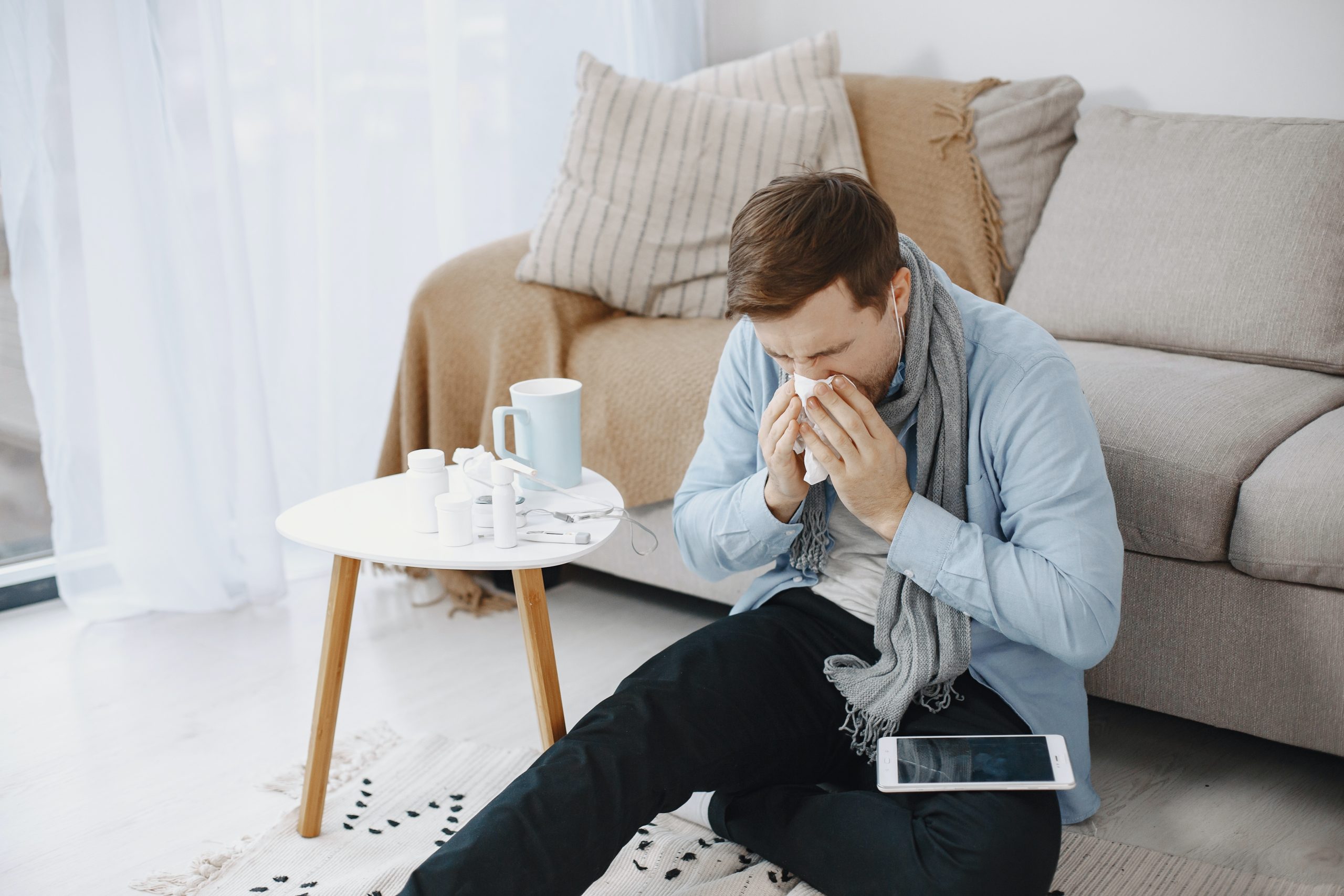
Do you get itchy throats, teary and red eyes, sniffles, and sneezes when autumn’s cooler days and nights roll around? You might be experiencing fall allergies if you answered yes to all the above questions.
Seasonal allergies typically present with any or all of the following symptoms:
- Inflammation of the eyes, puffiness, and redness
- Nasal congestion or runny nose
- Sneezing
- Skin itchiness, hives
- Breathing difficulties, wheezing
- Asthma attacks
- Fatigue, lethargy, headaches
Most often, allergy symptoms are just annoying reactions that can feel like a constant cold. With the right methods for relieving symptoms, allergies can have little to no impact on some people.
But this does not mean they are harmless for everyone. Having ongoing allergy symptoms can increase the risk of infection since the congestion allows viruses and bacteria to stay longer in the airways. While a sinus infection or respiratory infection can be easily resolved after a visit to the doctor, allergies can create more serious problems for people with underlying health problems. Infections and allergies can exacerbate respiratory conditions, including asthma and pulmonary disease. The condition often leads to hospitalizations or readmissions in those suffering from severe lung diseases. The allergic reaction can also cause asthma symptoms when a person is allergic and does not typically suffer from asthma. This is referred to as allergic asthma or allergy-induced asthma. People who suffer from these symptoms experience symptoms such as wheezing and shortness of breath, which reduces oxygen intake.
Autumn can be a time when you spend more time indoors, as outdoor activities are less prevalent. In addition to watching out for allergy triggers outdoors, you should also watch out for them indoors. Identify the most common fall allergy triggers and discover how to avoid them.
#1: Ragweed
It is believed that approximately 75% of people with spring allergies also experience allergic reactions to ragweed, the main fall allergy trigger. Pollen can be released as early as August, but it can last until October. Pollen from ragweed spikes in the fall, causing itchy eyes, scratchy throats, and sneezing symptoms related to nasal allergies.
There is no way to completely avoid ragweed pollen, but you can reduce your exposure. Avoid spending too much time outside when the air quality is poor. In order to prevent inhaling pollen, wear a NIOSH-95-rated face mask when you are doing outdoor chores like raking leaves. Wear a protective layer of clothing to take off when you get home. Keep your doors and windows closed.
#2: Mold and Mildew
Fall is a time when mold spores can be a problem. There are numerous types of mold and mildew, which multiply from spores spread by outdoor wind or indoor air. These fungi cause problems no matter where you live. Even though they grow year-round, they thrive in the fall. Outdoors, fallen leaves and compost piles provide breeding grounds for mold and mildew. Indoors, mold, mildew, and bacteria thrive in damp places like bathrooms, kitchens, and basements.
A damp environment fosters mold growth, so reducing humidity will prevent growth. Use a dehumidifier to keep the air between 30% and 50% humidity. Additionally, you can keep your bathroom, kitchen, and basement mold-free by regularly cleaning them with vinegar or anti-mildew cleaners. When cleaning the gutters where mold may have grown outdoors, wear a face mask.
#3: Dust Mites
Dust mites live inside dust particles. The most common places where they can be found are in bedding, furniture, and carpeting. Dust mites can cause allergic reactions when they come into contact with your skin. It is important to remember that dust mites are a year-round allergen, but they thrive in temperatures between the high 60s and mid-70s, which makes them more of a problem during the fall months.
Dust mite exposure can cause fall allergies, so during the late summer, clean all upholstery and carpets thoroughly; wash your bedding regularly in hot water; and cover your mattresses with a mite-proof cover. Be sure to clean the vent filters before using the heat. Place a portable high-efficiency particulate air (HEPA) filter in the bedrooms and living rooms where your family usually spends time. Vacuum cleaners with HEPA filters should be used often to clean floors.
Your primary concern should be to check your indoor air quality so you can easily spot problems before they create health issues for you or your family. Since there is no miracle product to remove all allergens from the air in your home, checking your air quality is your first step.


